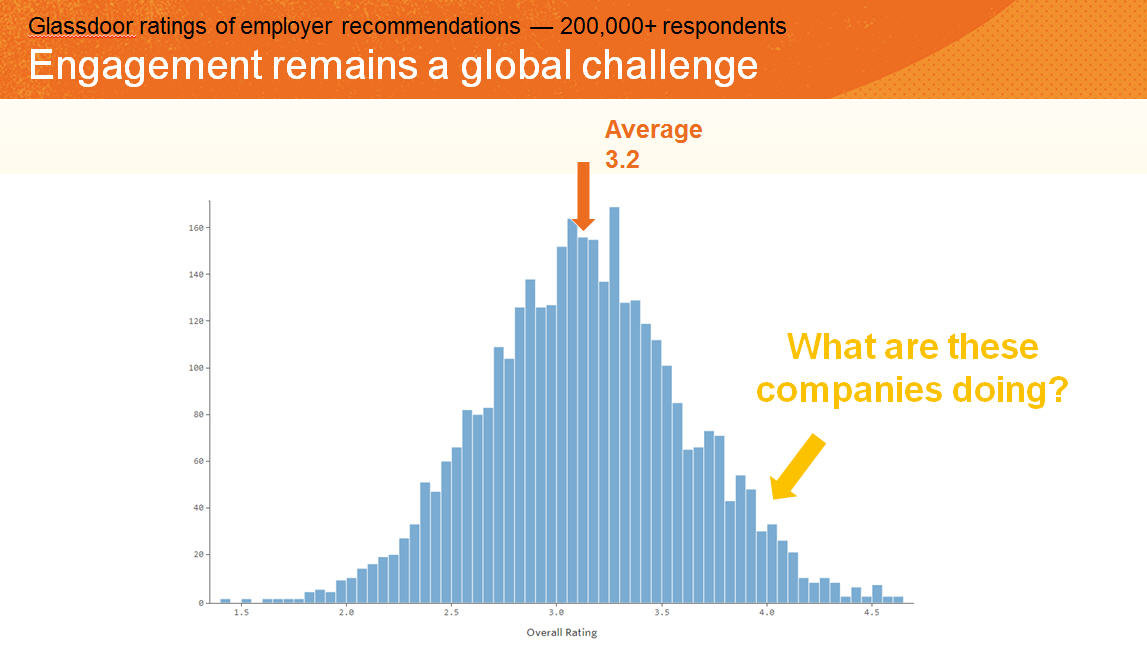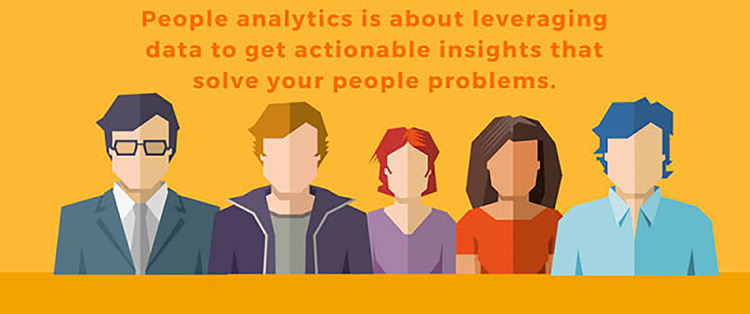Nine Business Benefits of People Analytics
 By Ettie Holland on 19.02.2021
By Ettie Holland on 19.02.2021 Are you still on the fence about people analytics? Maybe you think it’s just another buzzword; the furore will die down soon enough. You’re mistaken. People analytics is here to stay, and you really need to get on board. Here are nine benefits of people analytics that will convince you.
#1 - Strengthen Decision Making
Let’s look at the obvious point first. At heart, people analytics gives you more data, which empowers decision-making. Traditionally HR has been very subjective when making decisions, and people analytics marks an end to that.
This gives you a competitive edge because you’re making decisions that are statistically more likely to equate to success. You’re more likely to succeed and that’s definitely good for business.
#2 - Improve Retention
It’s widely accepted that employee acquisition costs more than retention. Put another way; it costs your business more to lose an existing employee than to find a new one. It’s no surprise, then, that 86% of business leaders are majorly concerned about employee retention (Deloitte Human Capital Trends Report 2016).
People analytics offers an answer. We’ve talked before about predictive modelling and the role it has to play in the future. Nowhere is this more relevant than to employee retention. What if you could identify flight-risk employees before they consider leaving? You could take proactive steps to encourage them to stay; that’s what.
Google offers a fantastic example. The Google HR team – dubbed People Operations – are known for their now-notorious slogan, “I have charts and graphs to back me up. So f*** off.”
You’d be hard-pressed to find a more substantial clue as to Google’s data-led approach to HR, so, unsurprisingly, they’re leading the way here. The rest of us are blinking the sleep out of our eyes, but Google’s been awake for years. As far back as 2009, Google was already using an advanced algorithm to determine retention-risk employees.
With acquisition costs spiralling, predictive retention modelling is one of the most significant benefits of people analytics.
#3 - Drive Accountability
People analytics harks an age of transparency. Until now, most employees have had little insight into performance. Any insight they have has tended to come in dense and challenging to understand reports. This data can’t truthfully be called insight because it’s so rarely acted upon as to be meaningless.
With people analytics, that all changes. As we explored in how to use people analytics effectively, data presentation is a vital part of the people analytics equation. Embracing people analytics means embracing a world of beautiful, simple, relevant data visualisation. It means employees get insight that they can easily understand, not just a flurry of data to drown in.
These employees can readily see and understand results and understand them in the greater context of strategic business objectives. This transparency fuels accountability, as employees take ownership of the data.
We’ve known for a long time that accountable employees perform better, improve more and are more of a business asset. The challenge has been finding ways to drive accountability. People analytics allows us to meet that challenge.
#4 - Explode Silos
Silos are the bane of life for most large organisations. Silos hinder agility and progression. They prevent organisations from evolving as quickly as they need to in today’s landscape. They reduce efficiency and stamp down productivity. They have a terminal impact on employee engagement and morale. All in all, silos are definitively A. Bad. Thing.
The problem is that silos are hard to break. It’s a cultural thing as much as an organisational thing, and the pain runs deep. They can be insidious.
That’s where people analytics can come in. One of the most significant benefits of people analytics is the ability to explode these silos. By providing relevant, accessible data across the organisation, you create a context for cross-departmental employees to interact in a meaningful way. You create a culture in which cross-department sharing is embraced. This initiates a snowball effect as employees start to benefit from this cross-pollination of experience and ideas.
People analytics allows you to address both the practical and cultural aspects that lead to the formation of silos, and that is invaluable.
#5 - Increase Employee Satisfaction
Workforce engagement is a significant issue for every HR professional today. Happier employees are more productive, more efficient, and loyal and can make a massive difference to the bottom line.
We all know that, and yet most organisations still have a long way to go when it comes to employee satisfaction. HR expert Josh Bersin notes that the average Glassdoor company rating is only 3.2 out of 5 – which is pretty abysmal.

This is an area where people analytics can have a real impact. Using people analytics, we’re able to identify how employees feel about working with us. We can determine the effect of specific policies and programs on employee satisfaction, so we can funnel resources into changes that will be most impactful.
#6 - Hire Better People
One of the biggest benefits of people analytics is the ability it gives you to hire better people. If you think that that’s a bold claim given the subjectivity inherent in ‘better’, then you’re right. It is a bold claim. But that’s what people analytics can deliver.
You can use people analytics to develop predictive assessments for performance based on your organisation’s current top performers. You can then leverage this knowledge while assessing candidates to ensure you hire the people most likely to perform within your business. That’s a far cry from the subjective personality assessments of yore.
#7 - Pinpoint More Fruitful Sourcing Pools
This is closely related to the point above because you’ll be hard pushed to hire better people if you don’t find them first.
According to the Bersin by Deloitte Talent Acquisition Factbook 2015, it takes an average of 52 days to fill an open position. Unsurprisingly, difficulty sourcing candidates is one of the biggest obstacles to hiring success (MRI Network Recruiter Sentiment Survey 2016).
With that in mind, an ability to identify the most fruitful sourcing pools translates into a direct competitive advantage. McKinsey share the example of an Asian bank that had heretofore concentrated their hiring efforts around top universities.
People analytics allowed this bank to identify numerous other areas that yielded high performing candidates. They were able to see which specific institutions were profitable sourcing pools, and identify previous job titles that acted as “feeder roles”.
The bank has since transformed how they hire, resulting in a 26% increase in productivity and a 14% increase in net income.
#8 - Secure Buy-In Into HR
On the one hand, there are the Google’s of the world. On the other, there are the companies for whom HR is a necessary evil, only resentfully granted a seat at the table. While things in your organisation might not be quite that extreme, HR is often considered a reactive function with limited usefulness.
We’ll explore the changing role of HR more in future instalments, but suffice to say this. Initiating a shift in how HR is perceived is one of the most vital benefits of people analytics.
People analytics allows HR professionals to justify HR expenditure by proving ROI. Those who don’t see the value of HR will be forced to, in no uncertain terms. Moreover, people analytics allows HR to take an increasingly strategic role. HR professionals establish themselves firmly as business leaders, developing ideas and initiatives that shape company direction.
#9 - Save Time
As benefits of people analytics go, this is pretty obvious. Sourcing, hiring, training and nurturing talent is a time-intensive process, and often that time turns out to be wasted in the wrong places.
Training employees who’ll jump to a competitor for a minor salary hike. Recruiting employees who last less than six months. Developing intensive employee engagement programs that never affect employee engagement.
People analytics allows you to identify the people and programs worth your time and those that aren’t. As a result, people analytics gives you more time to spend on the things that drive results, giving you a meaningful competitive edge.
Conclusion
People analytics is still at that stage where everyone’s talking about it, but few people are actually doing it. It’s time for that to change. Hopefully, this article has convinced you to step off the fence because the benefits of people analytics are tangible and mighty. Undoubtedly, organisations that make strides to leverage people analytics now will dominate in the future.


